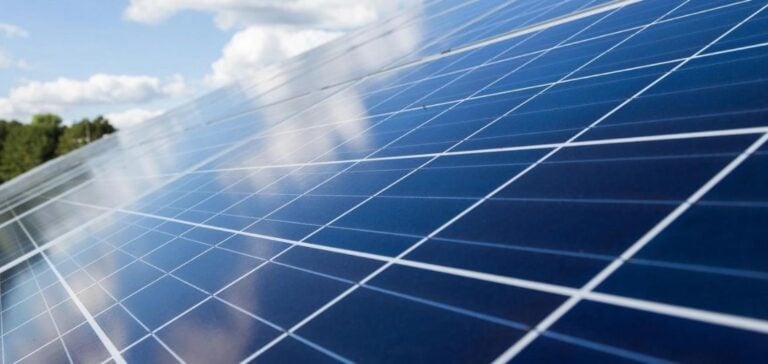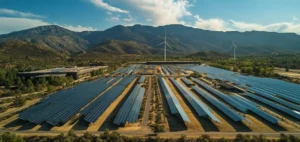Global investment in clean energy technologies is expected to reach $2,000 billion by the end of 2024. Among these investments, over $500 billion will be devoted to photovoltaics (PV), making solar the most financed power generation technology for the second year running, according to the International Energy Agency’s (IEA) World Energy Investments 2024 report. By 2023, renewable generation capacity had increased by almost 50% to over 500 GW, marking 22 years of continuous growth. Most of this increase – over three-quarters – comes from solar power.
Lower costs and greater competitiveness
This transition to a cleaner energy mix has led to increased access to cheaper electricity. By 2023, 96% of new industrial-scale solar PV capacity will have lower production costs than new coal- and natural gas-fired power plants. What’s more, IEA data show that the levelized cost of electricity (LCOE) of solar PV plants in China, the European Union and India is lower than that of existing coal- and gas-fired plants. Spot prices for solar PV continue to fall, having dropped by almost 50% by 2023. In Spain, solar capture prices in May were 58% below the monthly average spot price at €17.67/MWh, while in Germany they fell below €40/MWh, the lowest levels since summer 2020.
Tax incentives and regulation
In the United States, a June report from Lawrence Berkeley National Laboratory showed that solar, as a fuel-free generation resource, offers hedging opportunities against wholesale cost increases. Solar energy costs in the United States should continue to fall thanks to the new tax credits introduced by the Inflation Reduction Act (IRA). The IRA, signed by President Joe Biden in August 2022, offers grants to private and public entities via financial incentives such as investment allowances and tax credits. It should help the United States achieve its goal of reducing emissions by 50%-52% below 2005 levels by 2030.
Worldwide expansion of solar capacity
In Europe, the Net-Zero Industry Act, which came into force on June 29, aims to bring manufacturing capacity for clean technologies such as solar PV up to 40% of the EU’s annual deployment needs by 2030. In China, the world’s largest PV market, demand for solar modules will exceed half of global demand by 2023. The Platts PV Installations Tracker Q1 2024 forecasts 56 GW of new solar installations in China this year, followed by 16.6 GW in other Asia-Pacific countries.
Forecasts and future prospects
Global demand for solar power is set to continue growing, with manufacturers planning to add 309 GW of solar module production capacity over the next two years. Analysts at Commodity Insights forecast an increase in global solar capacity of 4.3 TW between 2024 and 2030, bringing total installed capacity to 5.9 TW. Solar power is set to become the most widely installed energy source over the coming decades, with more than 4 TW of new installations expected before 2030. By 2028, renewable energy sources are expected to supply 42% of the world’s electricity, more than half of which will come from solar PV and wind power. The increasing presence of solar power in the global electricity mix means that this technology will become a major influence on electricity prices in decarbonized systems. Solar module prices, like those of other commodities, are not immune to external influences, such as oversupply in Asia, which has led to a fall in solar module prices over the past 18 months. Platts’ new solar module price assessments, launched on July 1, will help track the solar revolution and provide market transparency with daily prices for Europe, China and the USA.






















